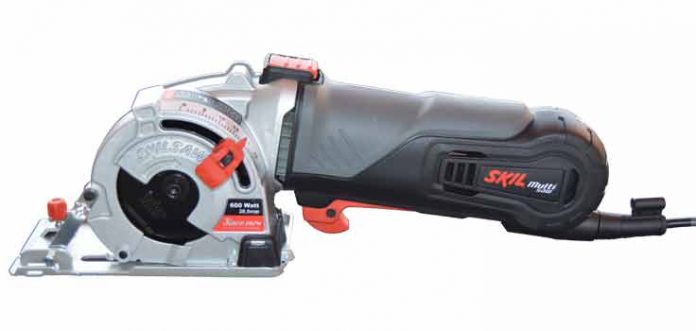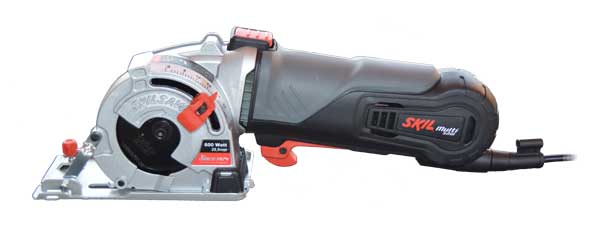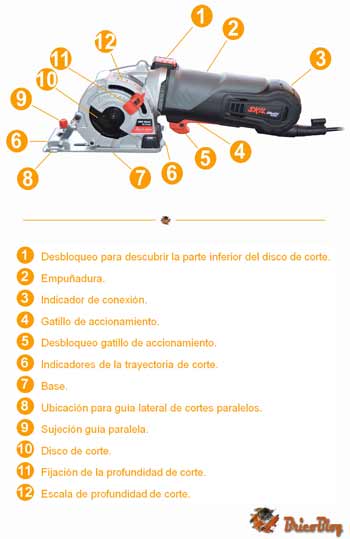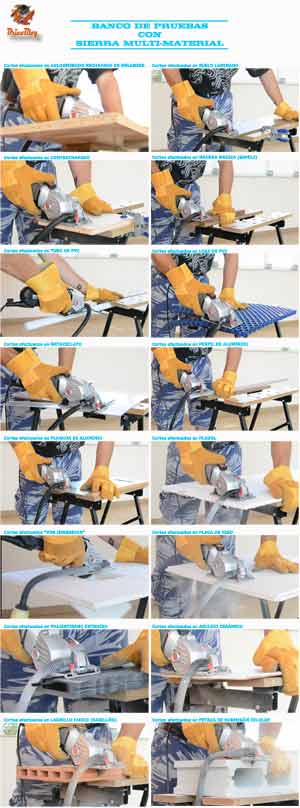
The multimaterial saw is an electric tool that is practically essential for any DIY enthusiast who has a medium, medium-advanced level.
If you are just starting out in this DIY, don’t worry, we have all been there at some point. However, we will try to make it a little easier for you. To do this, we leave you below a link to the DIY website for beginners. Cheer up!!
Well, today we will see the multi-material saw in depth. We will talk the parts that it consists of, how it works, and we will subject it to all kinds of tests, observing and checking its response and behavior.
With this article we start a new section of our YouTube channel that we have called “Test Bank”.

It is a compact tool, whose enormous value lies, on the one hand, in its tremendous versatility.
Without the need to change tools, it allows us to cut an important diversity of materials.
With the hard metal cutting disc, we can cut all kinds of wood, from laminate flooring, plywood, MDF, chipboard,… to solid wood.
We can also cut any PVC element, such as tubes, friezes, tiles, etc.
Aluminum is also cut very easily, both profiles and sheets.

And with the diamond blade, you can cut ceramic material, such as tiles. In addition to certain relatively soft building materials, such as plasterboard and plasterboard.
On the other hand, we have to highlight its excellent power. The 600w motor that it incorporates provides great stability, also giving it a cutting capacity of 28.5 mm.
This, together with its two kilos of weight, makes possible a great comfort and ease of use, offering in most cases its use in a completely stable way with one hand.
To carry out the tests, we have chosen the Skil 5330 multi-material saw.
You may be wondering… why this one and not another?
The reason is because we wanted to use a pioneering brand in circular saws. In fact, Skil invented the first circular saw in history.
Made this brief introduction, we go to what interests us.
Multi-material saw test video
Parts of the multi-material saw
First of all, we have the handle that occupies a large part of the tool.
The actuation system incorporates a safety system to prevent involuntary actuation, which is achieved with a double trigger.
 It also has a pilot light that indicates whether or not the tool is connected to the electrical network.
It also has a pilot light that indicates whether or not the tool is connected to the electrical network.
The disc change is done easily and quickly. You just have to press the spindle locking button and, with the hexagonal key, remove the screw, change the cutting disc, and put the screw back in its position, tightening it well.
Of course, the entire disc change operation, like any other that is not strictly cutting, must be done with the tool disconnected from the electrical network.
To remove and hide the cutting disc, we have the button located at the top of the tool.
On the side, there is the depth of cut guide, whose scale comes in millimeters.
For straight parallel cuts, the side guide can be used, which is inserted into its location at the chosen distance, fixing it with the corresponding screw. This guide can be placed both on the right and on the left.
It also has a suction socket, which will connect the tool with the suction system.
Technical data multimaterial saw
- Capacity at 90°: 28.5mm
- Power: 600W
- Idle speed: 6,000 rpm
- Ø shaft: 10 mm
- Ø maximum saw blade: 89 mm
- Ø min. saw blade length: 85mm
- Weight: 2kg
- Voltage and frequency: 220-240 V/50-60 Hz
- Noise and vibration levels:
- Sound pressure level: 94 dB(A)
- Sound power level: 105 dB(A)
- Standard deviation: 3dB(A)
- Vibration level (wood cutting): 2.8 m/s²
- Vibration level (metal cutting): 2.9 m/s²
- Vibration (K): 1.5m/s²
If you want to see all the technical information of the tool, we leave you a link to the manufacturer’s technical information website.
Tests carried out with the multi-material saw
The first thing is, as always, to equip ourselves with the appropriate protections, such as glasses and gloves.
We connect the tool with the suction system, and activate the latter.
Now we can start testing. We’ll start with the wood.
wood cuts
In the first place we have tried with chipboard veneered in melamine.
We have practiced plunge cuts, that is, starting from the inside of the piece to be cut. As well as attacking from one of the edges of the wood.
We have also tested laminate flooring, plywood, and even solid wood. The solid wood that we have used is sapele, whose degree of hardness is medium-high.
In all cases, the multi-material saw has performed flawlessly.
 PVC cuts
PVC cuts
We continue the tests with PVC, cutting a tube of said material both longitudinally and transversally.
This tool can handle any kind of PVC object, such as floor tiles like the one in the video.
methacrylate cuts
We have also made cuts in methacrylate. It is a plastic material, but much harder than PVC. For the tests we have used a 1mm thick plate, but due to the ease that we have observed, the tool is capable of cutting plates with a thickness of 3mm or even more.
The tool, as in the previous cases, has behaved in a very stable way, providing a very comfortable cutting operation. In addition, the cut finish is impeccable.
aluminum cuts
We have also cut a profile and an aluminum plate. In the latter, despite the great malleability of the material, the tool did not cause any type of rebound during the cutting operation.
Cuts in very soft materials
We have also made cuts in materials as soft as extruded polystyrene, obtaining an extremely perfect result.
Cuts in soft building materials
femos cut plasterboard and plasterboard. Once again, the behavior of the multi-material saw has been very comfortable, stable and with an excellent finish.
Until now, the cuts made in all the indicated materials, we have made with the minimum effort and the maximum stability. In other words, the tool has been “excessive”.
The disc used for all the indicated cuts has been the hard metal one. Now we will change it for the diamond disc to make cuts in other types of materials.
Ceramic tile cuts
This type of material is much harder than the previous ones, requiring greater effort and control on the part of the user. However, the tool performs satisfactorily, being possible to use it with one hand.
Hollow brick cuts
We have also tested the tool with another construction material, hollow brick, as is the case with brick.
The behavior of the machine has been very similar to that of the tiles.
Cuts in cellular concrete flask
Finally, we have carried out tests on a cellular concrete flask.
Contrary to the impression we had a priori, this material is much softer than tiles and brick and, therefore, cutting is much more comfortable and faster.
Conclusions for the multi-material saw
 Well, in the tests carried out, the Skil 5330 multi-material saw has clearly shown its enormous versatility, power, and ease of use.
Well, in the tests carried out, the Skil 5330 multi-material saw has clearly shown its enormous versatility, power, and ease of use.
Therefore, it has passed our benchmark, with a score of 9.5.
The reason for not having reached 10 is because we have missed an accessory, which could be very useful in certain situations. We refer to a disc that allows cutting steel with a maximum thickness of approximately 1 mm.
It would be more than enough to meet 100% the expectations of use in DIY.

.



